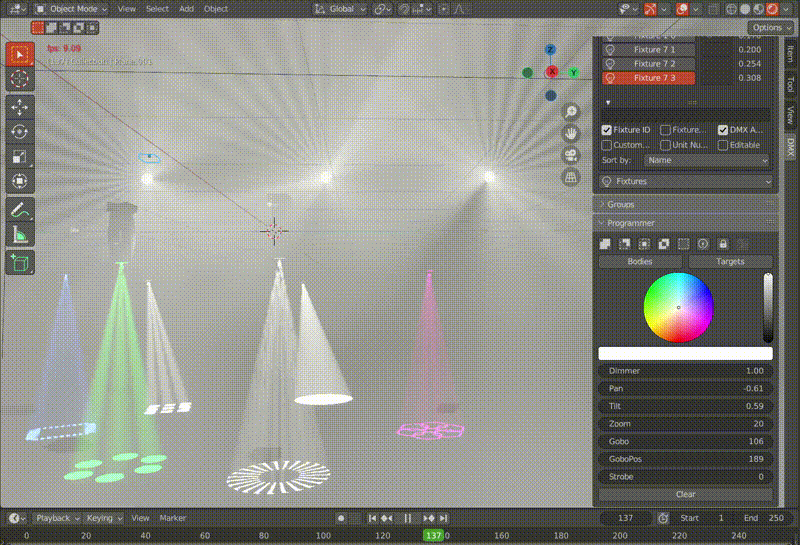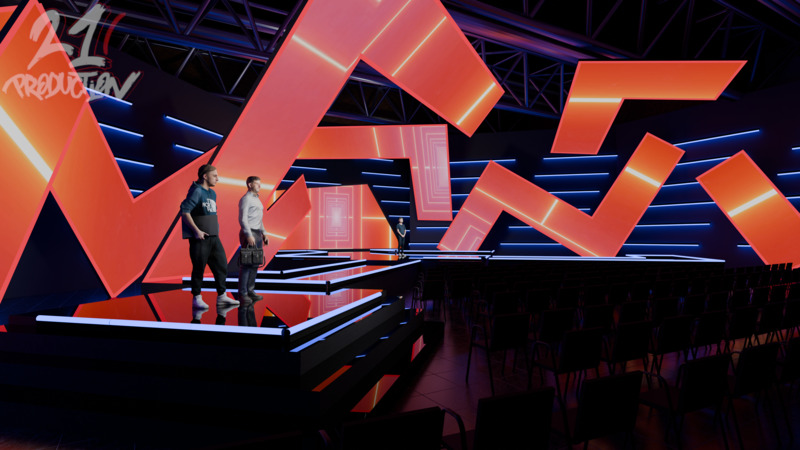Motivation
As lighting designers, we have always wanted a free DMX visualizer capable of
ray tracing, with capabilities for real-time programming of dynamics, as well
as the ability to produce photorealistic output.
BlenderDMX Addon offers both possibilities: Eevee real time renderer offers
the dynamics, while Cycles offers stunning photorealistic results.
The combination of
tools like Blender, Python, and GDTF provides a transparent and accessible
platform, allowing designers to deeply comprehend how each component works and
make improvements or modifications as required.
Open Source
The source code is completely open source under the GPLv3 license and
openly available on GitHub. Feel free to inspect, share, and
contribute!
By leveraging open-source technologies, designers can fully learn and
understand every detail of the system, empowering them to make informed
decisions and tailor the solution to their specific needs.
BlenderDMX Addon is using General Device Type Format (GDTF) and My Virtual
Rig (MVR) - open-source file formats that let you share anything with
anyone.


